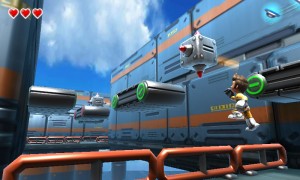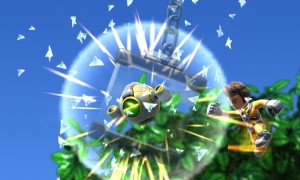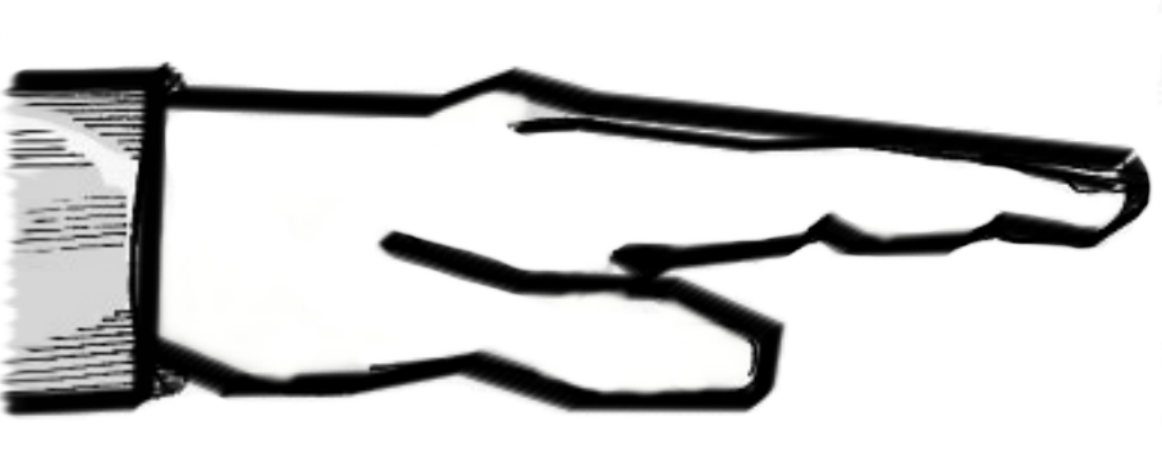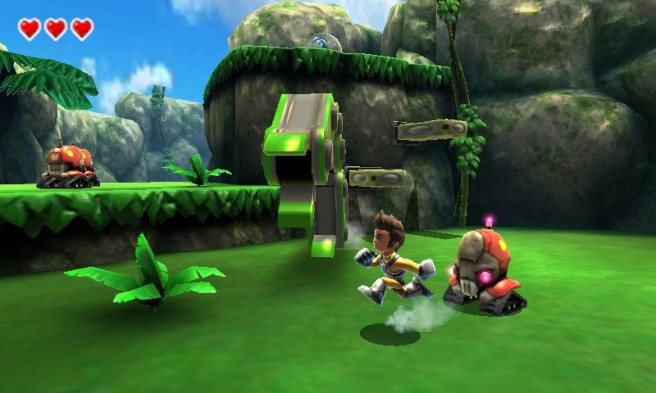[Review] Jett Rocket II (3DS eShop)
System: Nintendo 3DS
Release Date: November 13th, 2013
Developer: Shin’en Multimedia
Publisher: Shin’en Multimedia
Author: Austin
Released amidst a flurry of absolutely no hype or promotion– courtesy of Nintendo, it seems– Jett Rocket II: The Wrath of Taikai popped onto the 3DS eShop as the sequel to a well-loved (if perhaps a bit archaic) WiiWare title that bears the same franchise name. It’s billed as a platformer– and that it is– but it’s one that can’t seem to choose between 3D and 2D, swapping between the two as though it’s a motorcyclist in the busy lanes of a Los Angeles highway. The game is certainly trying to take you somewhere, and doesn’t seem afraid to take its own route to get there– but is the trip worth the price?

Chiefly, Jett Rocket II is what would be referred to as an “old school” 3D platformer, though the game has both 3D and 2D sidescrolling levels. The pace is slow, the level design inarticulate, the difficulty high, and the visuals about as bland as they come– it conjures memories of solid third party platformers on a console like PS2 or N64, but perhaps somewhat less aesthetically interesting. The hero of the game– who I will assume is named ‘Jett Rocket’– is your typical “cool kid” character, with a perfect swish of hair accenting his non-specific robotic suit. There’s not much in the way of unique texture or model designs (everything could have been purchased from a stock company and it’d be tough to tell the difference), but it doesn’t really matter: Though the lack of interesting visual stimuli is a bit of a shame in a general sense, its overall bearing on the experience is somewhat minimal.
Almost all of what’s worthwhile in Jet Rocket II has to do with the gameplay, but it isn’t a tightly designed, gimmick-based experience; that is, the levels here aren’t made with a “trick” in mind that the player must exploit, nor are they perfectly crafted to be as difficult as humanly possible without sacrificing the ability to be beaten (as many modern platformers are). Instead, obstacles are placed in a way that makes you feel as though the designers didn’t try to architect something artificially interesting so much as foster an environment in which challenges arise naturally as a consequence of the gameplay. Rarely will you come upon a section of level that has a clear-cut methodology for completion or an obvious sequence that needs to be followed; often the game will rely on your moment-to-moment instincts of dodging and attacking things that would have been tough to pre-suppose.
To provide a useful example, this is much more Mega Man 2, Mutant Mudds, Kirby, and much less New Super Mario Bros. U, Mighty Switch Force!, VVVVVV. It is an organic platformer– not an environmental one.

These examples aren’t to say that the game reaches the level of “classic” or “excellent” though, because it surely does not: Its level design is adequate– perhaps a bit above average for the 2D levels– and its controls are good enough, but small hiccups in the experience are magnified because of the sheer simplicity of the design. Sometimes the camera– primarily in 2D levels– will be a bit too far to one side, preventing you from seeing quite as far as would be necessary to anticipate certain enemy movements or hazards. In 3D levels, rotating the camera is painfully slow, though this isn’t a nuisance so much as an annoyance– it’s nearly half as fast as would seem apt. Also in the 3D levels: There are sections with absolutely nothing to do, where you merely walk to the next grouping of enemies or platforms. Such design might be forgivable if the game had interesting environments to look at or a speedy character (Jett is an awfully slow runner…), but it does not.
There is one consolation for a certain audience though: The game gets relatively tough pretty quickly, and even the most ardent platforming fanatics will get a handful of game overs by the time the credits roll. The difficulty very rarely feels unfair, but it does have one obnoxious snag: The game utilizes knock-back akin to Ghosts ‘n’ Goblins, wherein getting hit by an enemy/laser/spike tosses your character backwards uncontrollably a fairly significant distance. If you fall down a pit, into another enemy, or off of the platform you just worked hard to get upon as the result of this knock-back, then tough luck– you’ve gotta do it again. Why they decided to go with this seems a mystery, and it’s the only real rough patch in how the game dishes out challenge to you.
To conclude on the design, the game is entirely suitable. It reaches maybe an inch beyond what would be considered “acceptable”, but no further, and its technical design misses the bar by a fairly noticeable margin that doesn’t ruin the game, but it does cause momentary frustrations to surmount. It will no doubt be good fun for fans of the genre, but will make no new converts.

Overall, the experience of Jett Rocket II is successful in its core design, but shaky on its technical foundations. With such a relatively simple platformer, there’s not much separating the excellent from the adequate, and it’s on the wrong side of that small margin Shin’en fell. Thankfully, beneath the veil of mediocre camera-work and an obnoxious mechanic or two lays a simple, organic, and well-executed platforming game, and though it’d be tough to call the game a complete success, it’s be hard not to call it a moderate one in the same breath.

Despite its technical issues, Jett Rocket II is stunningly easy to recommend to those folks that enjoy a tough, satisfying 2D or 3D platformer. It provides something (for a cheap enough price) that not a lot of games do these days, and if you’re looking to scratch that classic platforming itch its about as good as you’re going to get without delving into the backlog. There are 18 or so levels in the game, and it takes roughly 3.5 hours to beat, or 6-7 hours for completion. On the flipside, it does have enough technical flaws that anyone outside of platforming fans will probably be put off, and– as you might expect– anyone without an affinity for the genre should avoid it as well. But it’s good– it’s just not great.
Want to participate in more NintendoEverything goodness?
Try our Facebook page!
Or our Twitter page!
